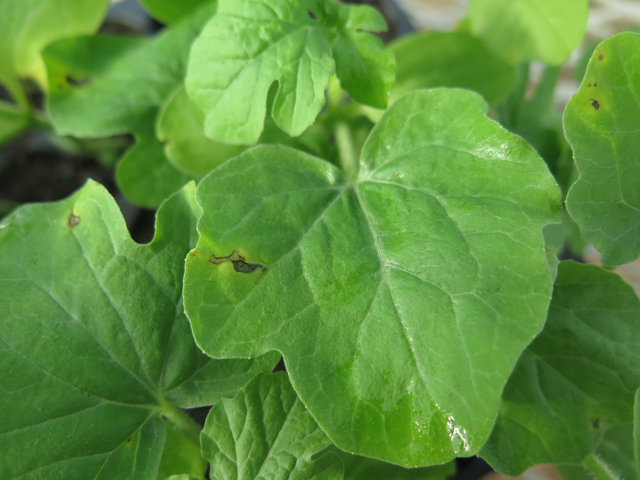Bacterial fruit blotch is a disease that can affect most cucurbits (see Figure 1). However, the symptoms are most often observed on watermelon. A brief description of this disease and some photos can be found here. This article will introduce new recommendations for this disease in Indiana. Details of these recommendations can be found in the Midwest Vegetable Production Guide for Commercial Growers 2015 (ID-56). Hard copies of the ID-56 are available from Purdue University now for $10. A free on-line version of the ID-56 will be available soon at mwveguide.org.
Copper products such as those with copper hydroxide or copper sulfate are often recommended for management of bacterial fruit blotch (BFB). However copper products applied too often can cause yellowing of leaves and even yield loss (phytotoxicity). Since BFB is mostly caused by rare contaminated seed lots, I have been reluctant to recommend copper products routinely for watermelon growers. However, the last few years I have observed several growers suffer large losses from this disease. Therefore, I have decided to bring Indiana recommendations in line with those of Georgia and South Carolina. See below.
Instead of applying copper products all season long, apply copper 2 weeks before first female bloom, at first female bloom and 2 weeks after first female bloom. Additionally, application of the product Actigard at 2 of the 3 copper application times listed above is recommended.
Actigard does not have any direct effect on the bacterium that causes BFB. Instead, Actigard ‘tells’ the plant that it is under attack from a disease, causing the plant to produce defense compounds. Like copper compounds, Actigard can cause yield losses in plants. Therefore, do not use Actigard on plants that have been stressed by weather or other factors. I would use the low rate of Actigard, 0.5 oz. per acre.
If you have any questions or comments about bacterial fruit blotch, these new recommendations or the Midwest Vegetable Production Guide for Commercial Growers 2015 (ID-56), please do not hesitate to contact me. (Originally published 1-9-2015 at veggiediseasesblog.org)
